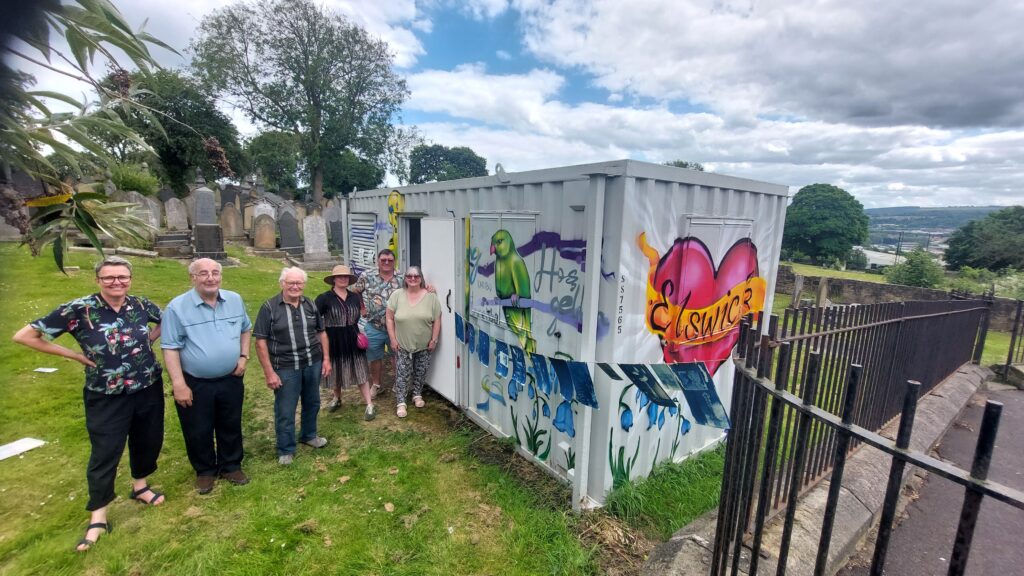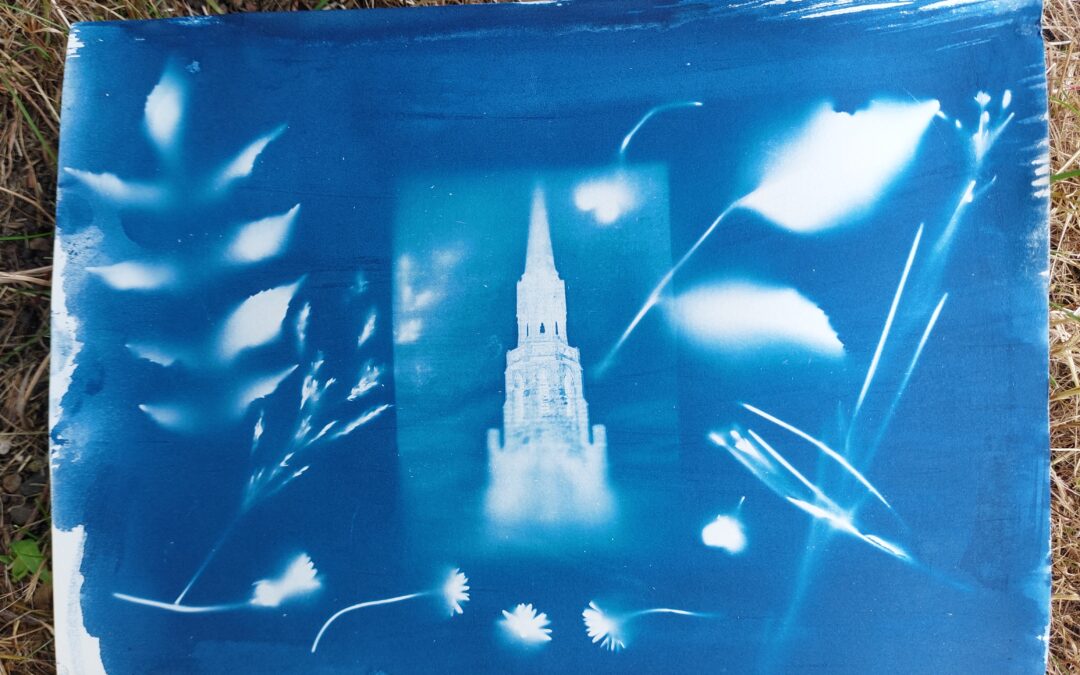Cyanotype image by Pam Royale
Cyanotype workshops in the sun at St John’s Cemetery
The summer sun finally made a showing at St John’s Cemetery two mornings in June for cyanotype workshops led by Stories of the Stones artist Julie Ballands. Nature has been an inspiration for art-making throughout history and we have used the natural and built environment of the cemetery as inspiration for the creative visual workshops that have taken place during the project. Participants gathered at the Trust’s onsite cabin and foraged in the cemetery to gather leaves, twigs and grasses to combine with their images taken in the photography workshops printed onto acetate to create their experimental blueprints.
Cyanotype photography is a camera-less technique that involves laying an object on paper coated with a solution of iron salts before exposing it to sunlight. The UV rays from the sun react with the chemicals on the paper to create the recognisable cyan-blue background. Where the paper has been covered with an object it will remain white. The prints are then washed on water to leave a beautiful unique print. The process was invented by John Hershel in 1842 and proved a cheap and easy way to create photographic prints. The first ever photographic illustrated book Photographs of British Algae: Cyanotype Impressions, was created using the cyanotype technique by Anna Atkins, an English botanist and published in 1843. She was a talented illustrator, but wanted to find a more accurate way to capture plant specimens.
During the second workshop, we found out that we had a professional cyanotype creator in our midst! Ian Royale, one of the project’s stellar volunteers, realised that this was exactly the same process (albeit on a much smaller scale) that he had employed while working as a plan printer for Tyne & Wear County Council in the 1980s.
“Plans would be drawn out by hand by draughtsmen and women for the housing or planning departments on huge sheets of acetate and then we would feed them into a big machine that had big lamps and paper in and we would produce the blueprints. And I’ve just realised it’s the same process as we’re doing today!”
Ian Royale, workshop participant

We are hoping to display some of the prints created at our Heritage Open Day event on Monday September 9th at St John’s Cemetery.

